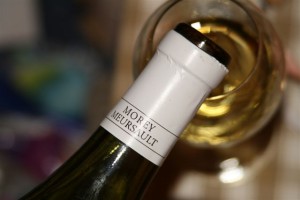New Burgundy Imports
Barry Weinman: 23 December 2015
Fluctuations in the Australian dollar have impacted on the price of some imported wines over the last few years. Whilst the big houses’ prices have stayed relatively stable, I have noticed fairly big shifts in the price of some wines, particularly from Burgundy. For a period, there was a flood of great value wines, but as the dollar has fallen, prices have risen accordingly.
Prices today now appear to be back around traditional levels. With this in mind, I was pleased to be able to look through a range of direct import wines brought in by Lamont’s. Whilst the wines are in no way cheap, they do offer a cross-section of styles, often showing excellent typicity and high quality.
My notes below are first impressions. There were over 60 available for tasting, so I did not dwell on any of the wines for long. Also, as the tasting was not a blind tasting, I have not allocated points to any of the wines.
Vintages
After very good vintages in 2009 and 2010 for both red and white Burgundy, 2011, 2012 and 2013 were more variable.
According to Jancis Robinson (http://www.jancisrobinson.com/learn/vintages/burgundy-white), in both ‘12 and ‘13 the high quality of white Burgundy proved much better than most expected. The downside was that volumes were much reduced. 2011 was not so lucky.
Reds fared better in some parts in 2011, but again, the ‘12s and ‘13s fared were stronger overall. http://www.jancisrobinson.com/learn/vintages/burgundy-red
The Wine Enthusiast was more supportive of 2011, as was The Wine Advocate.: https://www.winemag.com/PDFs/Vintage_Chart_2015.pdf
First Impressions
Pernot Belicard – Chardonnay – Puligny Montrachet – 2012. Fairly straightforward, but clear typicity. Minerality and texture over fresh fruit, hints of grapefruit and melon. ($122)
Pernot Belicard – Chardonnay – Puligny Montrachet – Champ Canet – 2013. Fine minerality and fruit, with hints of flint. This is really smart. The palate is bright, textured and long, with a fine finish. ($186).
Pernot Belicard – Chardonnay – Puligny Montrachet – Perrierres – 2013. Bigger, richer and more expressive. Long, powerful palate with stone fruit in the peach spectrum, minerals and melon. Great length to close. ($186).
Pernot Belicard – Chardonnay – Mersault – Perrierres – 2013. Refined and balanced. Less overt power than its sister wine from Puligny, but with lovely grace and balance. Long and fine, with gentle minerality to close. A graceful wine. ($255).
Pierre Morey – Mersault – 1er Cru – Charmes – 2013. Quite generous fruit, yet the acid and minerals add restraint and balance. Long and refined, this is a smart wine with a zesty finish. ($199).
Jean Monnier et fils – Meursault Genenrieres – 1er Cru – 2013. The potential is there, but this is quite acidic and restrained at present. Hints of smoke to close. Taut and fresh, give it 5 years to show its best. ($98)
Phillippe Livera – Pinot Noir – Gevery Chambertain – Clos Village – 2011. Fragrant cherry fruit on the nose. The palate is light and fresh, the weight matching the gentle fruit. Good length, this wine will suit current drinking. ($104).
Phillippe Livera – Pinot Noir – Gevery Chambertain – Clos Village – 2012. More depth and density compared to the 2011. Cherry fruit and supple spice, with a core of minerality. This finish is defined by fine, drying tannins which frame the fruit perfectly. Long and supple finish. Now – 5 years. ($104).
Phillippe Livera – Pinot Noir – Chapelle Chambertain – Grand Cru – 2010. Feminine, delicate fruit on the nose. The palate has cherry and spice, with cedary oak. The power here really builds, gaining depth and texture. The length is a feature. A spectacular wine with innate power, reflecting the vintage. ($N/A).
Domaine Humbert Freres – Pinot Noir – Gevery Chambertain – 1er Cru – Estrournelles St Jacques – 2012. A lovely purity to the fruit, with power and structure. This is a big wine that needs a few years, but will reward ($255).
Jean-Marc Millot – Pinot Noir – Echezeaux – Grand Cru – 2011. Limpid appearance. This is pretty, refined and elegant. There are cherry fruit notes with subtle spice. Delicate, this is a great effort for the year. ($264).
Pierre Morey – Pinot Noir – Pommard – 1er Cru – Grand Epenots – 2012. Cherry, spice and supple tannins all feature here, with bright acidity driving the finish. Angular, this needs a few years to let the high quality fruit shine. ($192).
Pierre Morey – Pinot Noir – Pommard – 1er Cru – Grand Epenots – 2013. For current drinking, I prefer the balance here. More feminine and refined, with gentle structure. Drink over the next few years while waiting for the 2012 to hit its straps. ($196).
Emilie Geantet – Pinot Noir – Gevery Chambertain – Vieille Vignes – 2013. Grace and power is a feature of all Geantet wines, and this is no exception. Refined, elegant and silky. Souring acidity adds life. Cherry spectrum fruit and a very clean finish. ($125). 
Emilie Geantet – Pinot Noir – Gevery Chambertain – 1er Cru – Les Champeaux – 2013. Seductive nose, with cherry and anise. The cherry fruit here is breathtaking: intense, yet refined and balanced. The finish is long and supple, with tight knit oak adding depth. Evolves and builds. A superb wine and my pick of the tasting. I might need to have a word to Santa… ($192).
